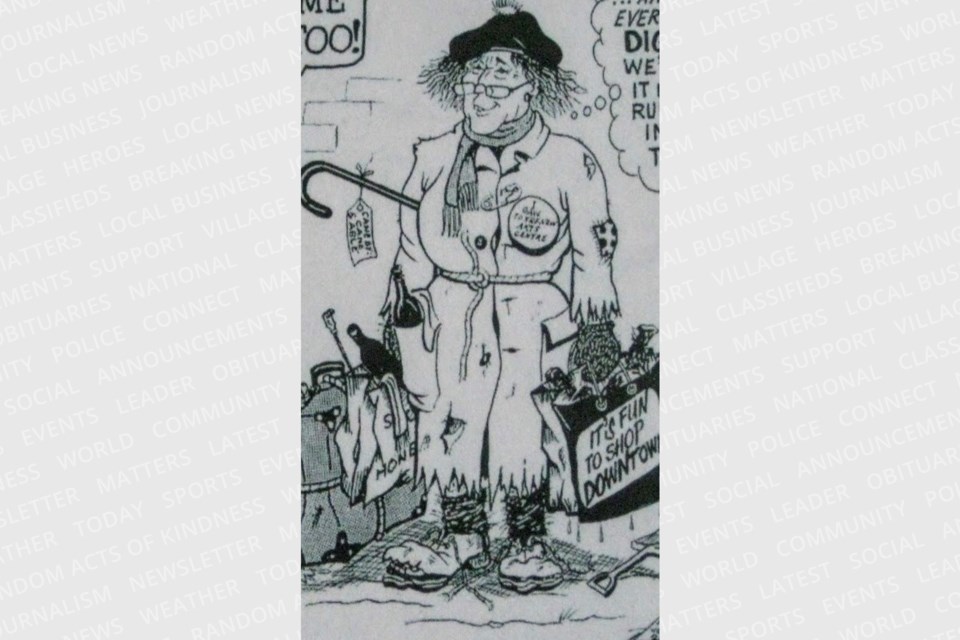Recently someone commented that they dubbed me “Cambridge Today’s storyteller.”
I like that title. So here is another story which took place several years ago in Cambridge.
A discussion this summer with my 13-year-old grandson McKenzie reminded me of the adage, “Do not judge a book by it’s cover.”
McKenzie was proudly showing me his purchases bought from the local charity shop. He was explaining that he’d been careful to select the most prominent logos, the classiest ones, as looking well dressed was very important.
Asking him why he thought so he replied, “If you have expensive shoes, good clothes and a nice haircut, people don’t bully you as much.”
Sadly, he might be right which is unfortunate, but first impressions do influence us no matter how hard we try not to let them.
It seemed a good opportunity to share an earlier experience of mine when I was invited by a teacher at Preston Public School to talk to his class about type casting people and first impressions.
At the time, being younger than most folk who walked with canes or other mobility devices, Don Oberle asked if I’d come to talk to his students. Don was a highly respected and well-liked teacher who cared greatly for his students. He wished to teach them as much about life as he could, given the restrictions of the curriculum.
It was agreed I would arrive dressed as an old woman walking with a cane, come into the classroom, say something briefly and leave. Then to come back a few minutes later as me, a younger well-dressed woman walking with an elegant cane. It sounded fun so we set a date and I began to think through how to dress.
Wearing an old raincoat, a battered hat, a beaten up and scratched metal cane (looking rather like the cartoon character of me depicted by the late Muff Mills). I slouched in, interrupted the teacher, and yelled out “Where’s Joey? I’m looking for Joey?”
Some of the students giggled, others looked a bit scared, but all of them were paying attention. After a quick look around the classroom searching for Joey, I left. Returning a few minutes later dressed in a classy outfit with a good-looking cane, I walked upright and briskly, the students looked more relaxed.
They were encouraged to share their thoughts. We chatted about the difference, how they had felt when the first interloper arrived? Did they feel differently when I returned? Many answered they did not believe I was the same person at first. Some said they thought it was funny, others admitted to being scared. We had a good chat about feelings, stereo types and first impressions.
We talked about when people were a little different from those we knew, accepting those people who did not look and behave as we did, could be difficult.
Most of us like to feel accepted, we want to be part of the crowd and young children are especially sensitive on this subject. When we come across something or someone we don’t understand, we often react negatively.
Once the class in Preston relaxed, they became very interested and the questions came, why did people need canes, where could you buy them, did they have to be a certain kind? Some of them tried walking with them. We talked about how many might have grandparents or relatives who used assistive devices and how they could share with them correct usage.
It became a very educational lesson with a few laughs and shared communication; how in the past they were a fashion item for the wealthy, exotic, beautifully decorated with jewels and precious metals. The students were surprised to see some of the beautiful canes as we showed them photos. They left knowing more about devices than most adults, they now understood the stereo type that all cane users are old was not true, but that image made people reluctant to use them when they might be helpful.
What surprised and pleased me most of all were the thank you notes I received about a week later. Stories of shared discussions with grandparents. One boy told me he’d made sure his grandparents’ canes were the right height now he knew how important it was. Coloured drawings of types of canes I could make. Students told me stories of how scared they had been initially, how they had changed their attitude. It was a very worthwhile morning and one I still recall many years later.
Once I had related this to McKenzie, he told me he understood that, but he still found school kids could be very cruel and he would continue to dress as well as he could afford. I do understand, if meeting someone for the first time or having them visit us at home I take extra care to present an acceptable image. It’s a cultural habit that is difficult to break even when we know better.
But thanks to Don Oberle that day many students learned an important lesson about life and focusing on the similarities not the differences.



